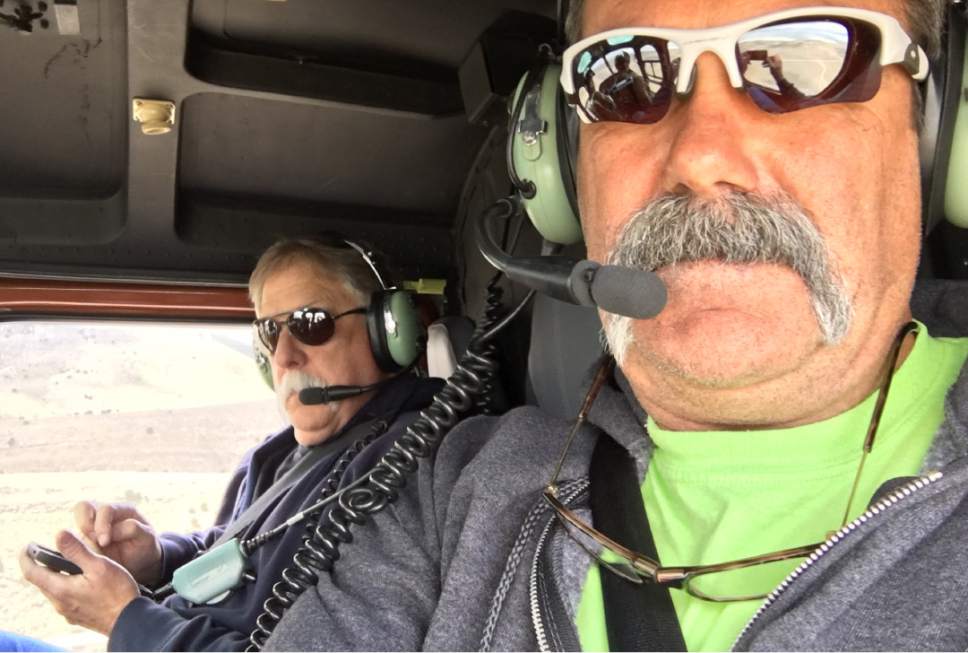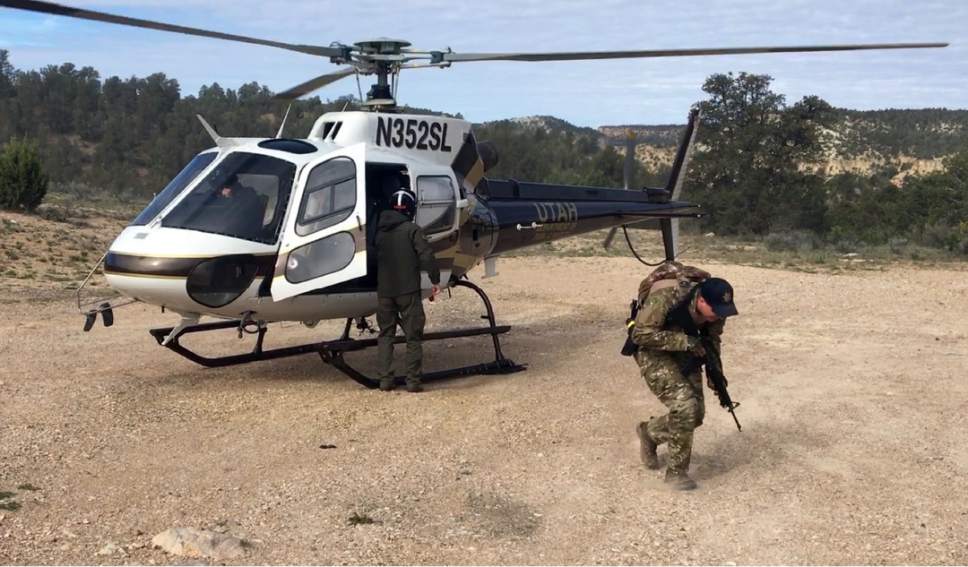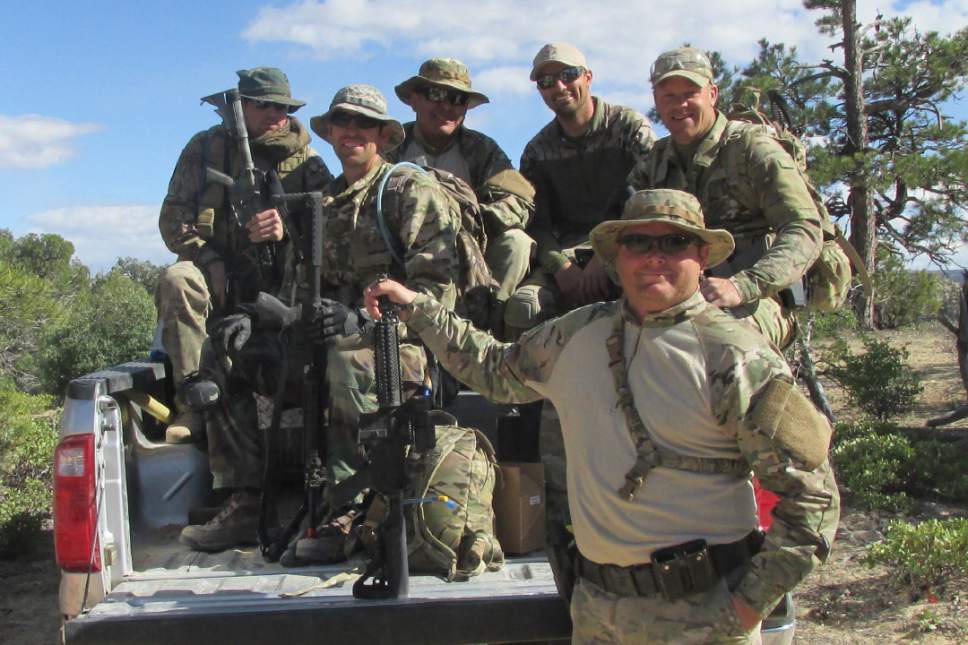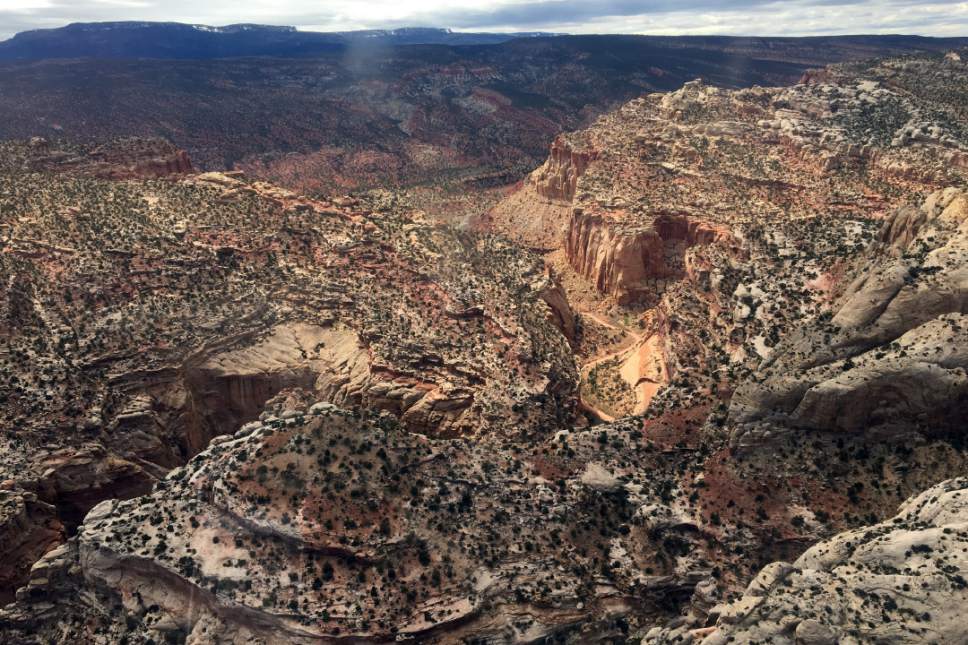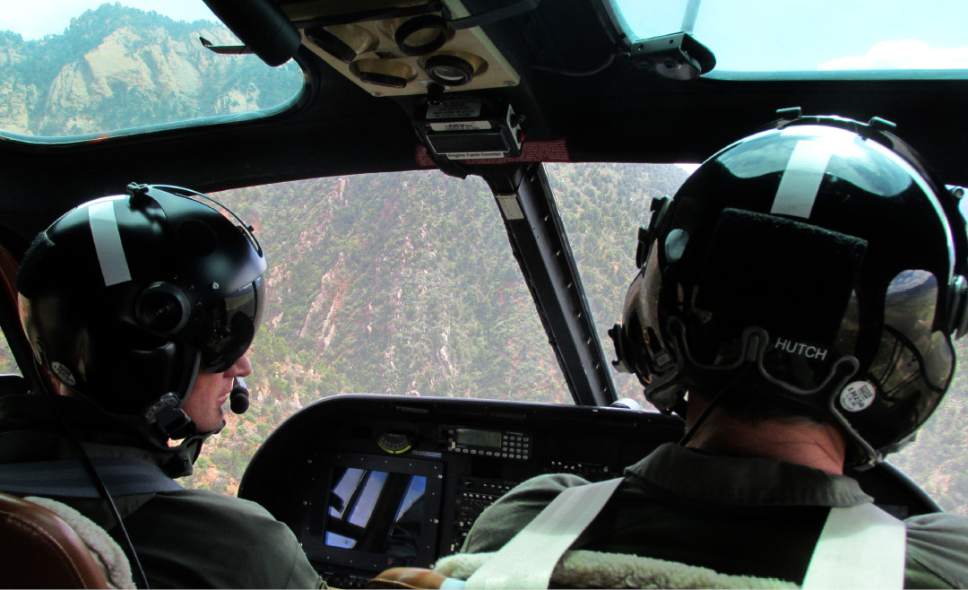This is an archived article that was published on sltrib.com in 2017, and information in the article may be outdated. It is provided only for personal research purposes and may not be reprinted.
Kane County • Tracking people is hard, especially if they're willing to kill you. Last week, I was shot, blown up, lost and exhausted — all within a couple of hours.
The occasion was the Kane County Sheriff's Office three-day training in the art of finding people in some of the most remote country in the United States. Dozens of police officers from the region participated.
Sonny and I were invited to tag along by Kane County Sheriff Tracy Glover. Perhaps it was our reputation for blowing up stuff that made our presence potentially helpful, but I realized later that the sheriff just needed a couple of training dummies no one would miss.
The idea behind the training was simple. When criminals, including heavily armed ones, flee into the weeds, someone has the unpleasant task of going in there to find them. Invariably this means the police.
Then there's the less-dangerous application for tracking people through the wilderness — search and rescue. Thanks to Utah's moonscape topography, it's frequently just as hard to find people who want to be found as it is those who don't.
We flew down to Kane County in a Department of Public Safety helicopter with Utah Highway Patrol pilot Bret Hutchings and UHP tactical flight officer Spencer Duke. The flight path took us low and slow over country so remote that it left us wondering if anyone had set foot in it the past thousand years.
In the interest of giving us the best view, Hutchings kept turning the helicopter on its side and corkscrewing through narrow canyons. I got a little nauseated. Sonny stared intently out the window, no doubt believing it was possible to spot arrowheads and pottery shards at 100 mph and a thousand feet straight up.
We landed at — well, I don't know exactly. No one ever told me. There were tents, a command post, a field kitchen and police vehicles from everywhere.
Everyone was armed and wearing camouflage. It looked like priesthood meeting for the Fundamentalist Church of the AR-15 Brethren. No offense if you actually belong to that one.
Glover put us straight into training. First up was a shooting course, firing assault rifles at targets that appeared by surprise or from great distances. I was immediately dead when I missed a target from 15 feet.
Hurricane Officer Yates Wright, who was my instructor during the massacre alley part of the training, talked me through the rest of the course. To the best of my addled recollection, my score was two bushes, a tree, three rocks, a lizard and various portions of sky.
Then it was on to booby traps, where I fared no better.
Not everyone who runs from the police does so in a hysterical frame of mind. Some fugitives are deliberate enough to take the time to set traps for their pursuers. Kane County Detective Dan Watson ran this part of the course.
While simultaneously following a set of footprints, we had to watch for nearly invisible wires, pressure-activated mines, and twigs wired to 800 pounds of plastic explosives three feet away.
That last one is a bit of an exaggeration now, but didn't seem like it at the time. One member of our team disturbed a twig or a dust mote and set off an explosion so loud that it stopped my heart.
Sonny rescued me with his usual "KCPR," or Kirby cardiopulmonary resuscitation, punching me hard enough in the back to restart my heart and stop my screaming.
My personal score on the booby-trap trail? Try a 1 in 10 survival rate. The lone time I spotted a trip line to a fake bomb it turned out to be a bit of web attached to a real spider.
Tracking, or following the footprints left by the lost or lawless, was my favorite part of the program. It was something I could still use at this stage of my life. Knowing how to follow a trail left on the ground could save a life, and by that I mean my own.
Should it ever become necessary, I would use the tracking skills I picked up in the training to "un-lose" myself. If tracking works going forward, it stands to reason that it also works going backward.
Should I find myself alone in the wilderness, I could, in theory, follow my own tracks back to wherever Sonny parked the truck, I fell off the horse, or I started looking for a place to pee.
Eventually, I got tired of trying to keep up and watched the cops and search-and-rescue people practice what they do for real. This is where the helicopter came in handy.
As teams tracked "fugitives" through cedar thickets and rock-filled gorges, it was the copter that relayed information about the targets' positions and landed teams ahead of them. It was grueling work for those on the ground.
Despite the oftentimes brutal training, no one got hurt for real. The same may not be true when all the practice goes into action.
Robert Kirby can be reached at rkirby@sltrib.com or facebook.com/stillnotpatbagley.


